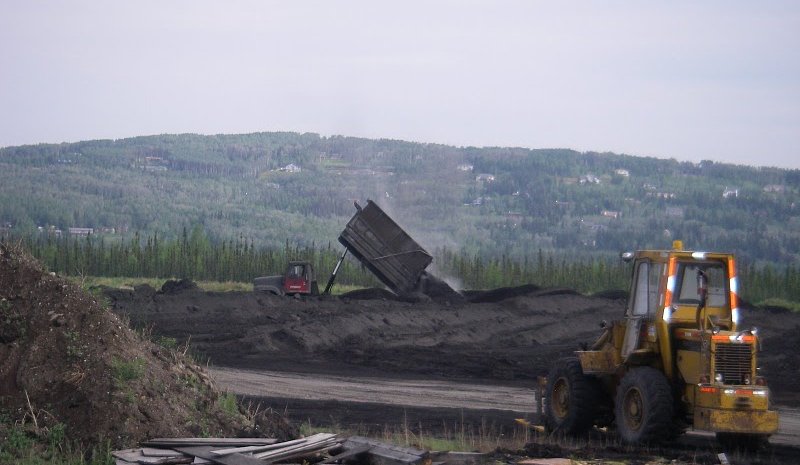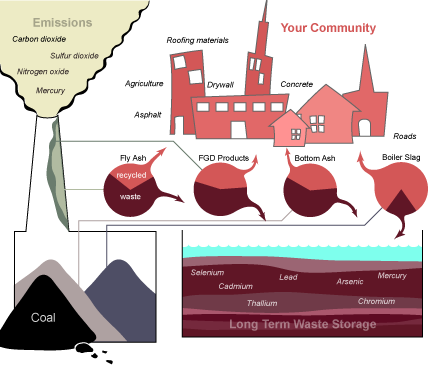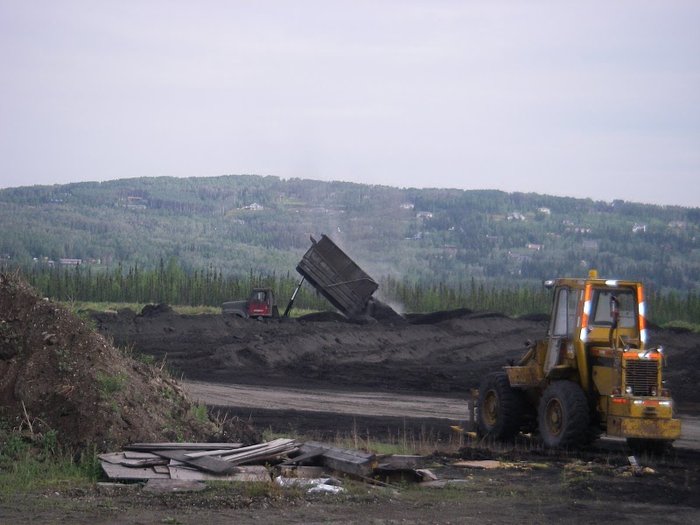
Background
Burning coal produces a variety of solid wastes known as coal combustion waste or coal combustion products. These include coal ash (fly ash and bottom ash), boiler slag, and flue-gas desulphurization products. In 2007 over 120 million tons of these wastes were produced in the US, of which approximately 44% was reused in other applications. Storage of the remainder is complicated by the presence of toxic and radioactive compounds in the waste.
Coal combustion wastes contain a variety of toxic compounds such as arsenic, cadmium, chromium, cobalt, lead, mercury, selenium, thorium and uranium, as well as dioxins and poly-aromatic hydrocarbons (PAHs). Despite the presence of these toxic compounds, this waste has not been regulated by the EPA as hazardous waste and has often been kept in large impoundments near coal-fired power plants without sufficient containment and in some cases at sites with a high risk of flooding in the area. Furthermore, waste storage generally includes no clear plan to render waste safe. This means they are by default plans to store waste forever, a recipe for eventual failure.
In 2007 the EPA conducted a large-scale survey assessing the risks2.5 Mb due to the long-term storage of toxic coal wastes, finding that in the worst case-scenario, residents living near an unlined coal waste pond can have a 1 in 50 chance of getting cancer from the site, primarily though exposure to arsenic. Furthermore, after a detailed analysis of this survey by environmental groups, the EPA refused to release the locations of the most toxic coal waste storage sites although they began informing local residents. However, in September 2009 the EPA announced that they were planning to overhaul the rules for coal-fired plants for the first time since 1982 to include new limits on toxic metal discharges. In advance of these changes the EPA and other have released studies documenting water contamination from coal waste at 137 sites in 34 states.

Groundwater near these impoundments is often polluted with arsenic and other contaminants. For example, the 2008 fly-ash spill in Tennessee plugged the Emory River, fouled approximately 300 acres, and will require the removal of 5.4 million cubic yards of coal ash waste. This spill is expected to cost more up to $1 billion to clean up and has recently been taken over by the EPA under the Superfund law.
Coal ash is divided into fly ash (which is captured from chimneys of the coal plant) and bottom ash (which is removed from the bottom of coal furnaces). Fly ash used to be released into the atmosphere but is now mostly captured prior to release. Most of this ash is impounded near power plants, while the reused portion is often placed in landfills/old mines or transported for use in cement production. However, the use of fly ash as a building material is quite controversial with proponents claiming that it reduces the cost of concrete and is better than impounding the toxins in a landfill and opponents pointing to numerous studies showing the highly variable quality of fly ash for concrete and risks associated with the presence of these toxins in the concrete.
In addition to bottom ash, older coal furnaces produce what is known as boiler slag which is a hard black granular material that forms when molten ash comes in contact with cooling water. Boiler slag can be used as inert filler in materials such as asphalt and concrete. While there is a demand for this waste product, supplies are dwindling as new coal combustion methods predominate.
Flue-gas desulphurization refers to the “scrubbing” process commonly used to remove acid-rain causing sulfur products from coal combustion exhaust. This process produces waste which consists primarily of calcium sulfate or calcium sulfide. This waste can be used to make synthetic gypsum in applications such as the creation of concrete and wallboard. While there is an interest in increasing the amount of coal combustion wastes that are reused, the market for gypsum is close to saturation. Partly to address this concern, the EPA and USDA have recently been promoting the use of these wastes as agricultural fertlizer.
Recently there has also been interest in recyling the uranium found in coal combustion wastes which would reduce the radioactivity of the waste, but may produce additional toxic byproducts during purification of the uranium.
Coal Combustion Waste Disposal in Alaska
Alaska currently possesses six coal-fired plants, all located in the Railbelt region not far from Usibelli Coal Mine Inc. These consist of three military bases (Eielson, Fort Wainwright, and Clear AFS), one “mine-mouth” plant near Usibelli, the Chena Power plant in Fairbanks, and a small plant at University of Alaska Fairbanks (UAF). All of these are “pulverized coal combustion” plants that are decades old. All of these plants have baghouses (particle capture systems) and the military bases and mine-mouth plant dispose of their combustion wastes in landfills/mines. Chena and UAF dispose of their wastes outside city limits via contractors.
Waste Disposal in Alaska is monitored by the Department of Environmental Conservation which maintains publicly available records of operation plans, and inspection reports for waste facilities.
According to these documents and to unpublished interviews the majority of coal combustion wastes in Alaska are used as fill in some manner or another. The three military bases dispose of these wastes in nearby unlined landfills, and Eielson also uses them to cap an asbestos landfill. The mine-mouth plant in Healy returns the waste to Usibelli where it is placed back into one of the mines.
The UAF used to use their coal combustion wastes as fill for things like driveways, parking lots, and roads on campus. Currently a contractor is responsible for the disposal of these wastes and all the waste currently goes to filling pits created by mining peat. The Chena power plant in Fairbanks uses a different contractor to dispose of their coal combustion wastes, but they go to the same location.
Environmental Impacts
As noted above, coal combustion wastes may contain a number of hazardous compounds. However, the concentrations of these compounds and their propensity to leach into the environment vary with the type of coal being burned, and the type of waste being disposed of (e.g. fly ash vs boiler slag). Chemical tests of Alaska’s coal combustion waste are needed to determine whether using this waste as fill poses an environmental risk.

Further Reading
- > Wikipedia article on CCW
- > American Coal Ash Association
- > Coal Ash: The toxic threat to our health and the environment. 2010 report by Physicians for Social Responsibility and Earthjustice.
- > "Managing Coal Combustion Waste (CCW): Issues with Disposal and Use" (2010) prepared by the Congressional Research Service.
Created: Jan. 19, 2018